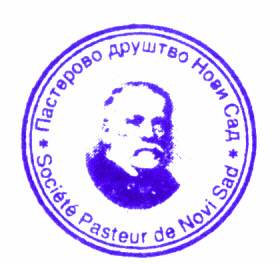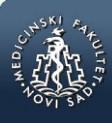md-medicaldata
Main menu:
- Naslovna/Home
- Arhiva/Archive
- Godina 2024, Broj 1
- Godina 2023, Broj 3
- Godina 2023, Broj 1-2
- Godina 2022, Broj 3
- Godina 2022, Broj 1-2
- Godina 2021, Broj 3-4
- Godina 2021, Broj 2
- Godina 2021, Broj 1
- Godina 2020, Broj 4
- Godina 2020, Broj 3
- Godina 2020, Broj 2
- Godina 2020, Broj 1
- Godina 2019, Broj 3
- Godina 2019, Broj 2
- Godina 2019, Broj 1
- Godina 2018, Broj 4
- Godina 2018, Broj 3
- Godina 2018, Broj 2
- Godina 2018, Broj 1
- Godina 2017, Broj 4
- Godina 2017, Broj 3
- Godina 2017, Broj 2
- Godina 2017, Broj 1
- Godina 2016, Broj 4
- Godina 2016, Broj 3
- Godina 2016, Broj 2
- Godina 2016, Broj 1
- Godina 2015, Broj 4
- Godina 2015, Broj 3
- Godina 2015, Broj 2
- Godina 2015, Broj 1
- Godina 2014, Broj 4
- Godina 2014, Broj 3
- Godina 2014, Broj 2
- Godina 2014, Broj 1
- Godina 2013, Broj 4
- Godina 2013, Broj 3
- Godina 2013, Broj 2
- Godina 2013, Broj 1
- Godina 2012, Broj 4
- Godina 2012, Broj 3
- Godina 2012, Broj 2
- Godina 2012, Broj 1
- Godina 2011, Broj 4
- Godina 2011, Broj 3
- Godina 2011, Broj 2
- Godina 2011, Broj 1
- Godina 2010, Broj 4
- Godina 2010, Broj 3
- Godina 2010, Broj 2
- Godina 2010, Broj 1
- Godina 2009, Broj 4
- Godina 2009, Broj 3
- Godina 2009, Broj 2
- Godina 2009, Broj 1
- Supplement
- Galerija/Gallery
- Dešavanja/Events
- Uputstva/Instructions
- Redakcija/Redaction
- Izdavač/Publisher
- Pretplata /Subscriptions
- Saradnja/Cooperation
- Vesti/News
- Kontakt/Contact
 Pasterovo društvo
Pasterovo društvo
- Disclosure of Potential Conflicts of Interest
- WorldMedical Association Declaration of Helsinki Ethical Principles for Medical Research Involving Human Subjects
- Committee on publication Ethics
CIP - Каталогизација у публикацији
Народна библиотека Србије, Београд
61
MD : Medical Data : medicinska revija = medical review / glavni i odgovorni urednik Dušan Lalošević. - Vol. 1, no. 1 (2009)- . - Zemun : Udruženje za kulturu povezivanja Most Art Jugoslavija ; Novi Sad : Pasterovo društvo, 2009- (Beograd : Scripta Internacional). - 30 cm
Dostupno i na: http://www.md-medicaldata.com. - Tri puta godišnje.
ISSN 1821-1585 = MD. Medical Data
COBISS.SR-ID 158558988
ANIMALNI MODELI DIJABETESA MELITUSA
/
ANIMAL MODELS OF DIABETES MELLITUS
Authors
Milana Bosanac1, Nikola Aleksić1, Natali Rakočević1, Vladimir Laković2, Andrijana Milankov1,3, Bojana Andrejić Višnjić4, Matilda Đolai3,4, Sandra Trivunić Dajko3,5, Nemanja Gvozdenović1,3,6
UDK: 616.379-008.64 The paper was received / Rad primljen: 16.04.2021. Accepted / Rad prihvaćen:23.06.2021. Sažetak Prevencija i lečenje dijabetes melitusa (DM) i njegovih komplikacija je važno za postizanje globalnog cilja, a to je smanjenje prevremene smrtnosti od nezaraznih bolesti za jednu trećinu do 2030. godine. Tokom godina su vršena brojna istraživanja o DM, pretežno na životinjama. Cilj našeg istraživanja je izvršiti sveobuhvatnu analizu podataka iz literature i identifikovati tipove i metodologiju animalnih modela DM: korelirati animalne modele sa tipovima DM kod čoveka; i predočiti prednosti i mane pojedinih metoda. Pretražene su elektronske baze podataka Medline, Highwire i Hinari, i to eksperimentalni i pregledni radovi. Animalni modeli DM a se dele na (i) indukovane, (ii) spontane i (iii) transgenske i nok-aut modele. U ispitivanju protekcije beta ćelija pankreasa, patogeneze i prevencije DM1 najpogodniji su spontani animalni modeli, dok su u proučavanju terapije DM1 najpogodniji hemijski indukovani modeli. U ispitivanju lečenja DM2 najčešće su korišteni transgenski i nokaut modeli, dok se u istraživanjima insulinske rezistencije i gojaznosti kod DM2 najčešće koriste spontani modeli. Jedan od važnih zaključaka jeste da iako su veoma korisni, ne postoji idealni model, te je od velikog značaja dobro poznavati prednosti i mane svakog od modela i primeniti onaj koji najviše odgovara cilju istraživanja.
Ključne reči: dijabetes melitus; animalni modeli; aloksan; streptozotocin Abstract Prevention and treatment of diabetes mellitus (DM) and its complications are important for achieving the global goal, reducing premature mortality from non-communicable diseases by one-third by 2030. Regarding DM, numerous studies have been conducted over the years, mostly on animals. The goal of this research is to: perform a comprehensive analysis of data from the literature and to identify the types of animal models of diabetes mellitus; determine which type of diabetes in humans corresponds to each of the animal models; present the applied methodology in the development of each model, the mechanism of occurrence and possible advantages and disadvantages of particular methods. To find as many accessible, relevant papers as possible, the electronic databases Medline, Highwire and Hinari were searched for both the results of experimental papers (Original Article) and data from review papers (Review Article). Models of animal diabetes are: (i) induced (experimental), (ii) spontaneous and (iii) transgenic and knock-out models. In the study of pancreatic beta-cell protection, pathogenesis and prevention of DM1, the most suitable are spontaneous animal models, while chemically induced models are the most suitable in the study of DM1 therapy. In the study of DM2 treatment, transgenic and knockout models were most often used. In contrast, in the study of the role of insulin resistance and obesity in DM2, spontaneous models were most often used. An important conclussion that can be drawn is that although DM models are beneficial, there is no ideal one, so it is essential to know the advantages and disadvantages of each model. diabetes; animal models; alloxan; streptozotocin References: PDF06-MD-Vol 13 No 2 Jun 2021_Bosanac et al.
1Univerzitet u Novom Sadu, Medicinski fakultet
2Specijalna bolnica za rehabilitaciju ”Junaković”, Apatin
3Klinički centar Vojvodine, Novi Sad
4Univerzitet u Novom Sadu, Medicinski fakultet, Katedra za histologiju i embriologiju
5Univerzitet u Novom Sadu, Medicinski fakultet, Katedra za patologiju.
6Univerzitet u Novom Sadu, Medicinski fakultet, Katedra za urgentnu medicinu.
Correspondence to:
Milana Bosanac
Medicinski fakultet Univerziteta u Novom Sadu,
Hajduk Veljkova 3, 21000 Novi Sad, Republika Srbija.
e-mail: 13782M15@mf.uns.ac.rs
Keywords:
 Medicinski fakultet
Medicinski fakultet